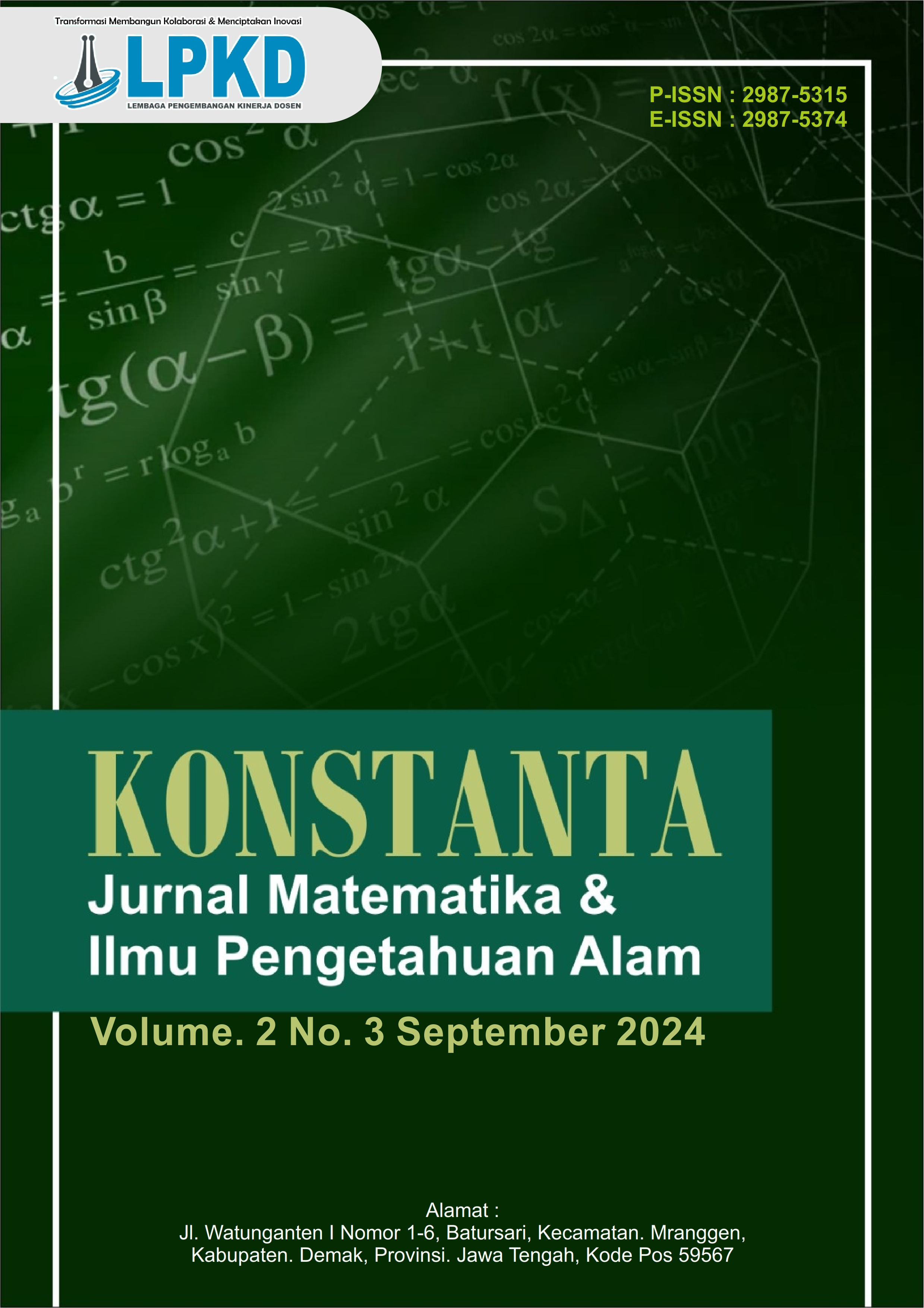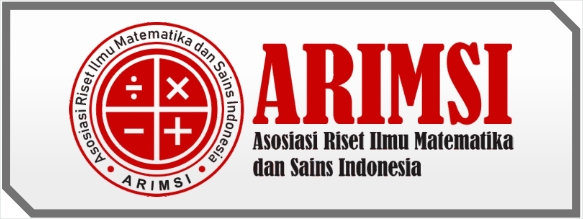Implementasi Pembelajaran IPA untuk Membangun Karakter Religius Siswa di Kelas V MI Nurul Ulum Pegiringan
DOI:
https://doi.org/10.59581/konstanta.v2i4.4473Keywords:
Science Learning, Religious Character, Integration of Religious ValuesAbstract
The implementation of science learning in schools not only aims to improve students' academic understanding, but also plays an important role in building religious character. Research shows that the integration of religious values in science learning can strengthen students' belief in religious teachings and increase their positive behavior. For example, Islamic values integrated into science materials at the SD/MI level can encourage students to be more convinced of the existence of Allah and follow His provisions, thus forming a strong religious character. In addition, learning approaches that prioritize routine activities such as praying together and reading the Qur'an before lessons have also proven effective in instilling religious character. Furthermore, the application of learning modules that integrate basic concepts of science with Islamic values, such as those conducted at the University of KH Abdurrahman Wahid Pekalongan, shows that students can better understand the material while internalizing religious values in their daily lives. Other studies also emphasize the importance of character education programs integrated in the curriculum, where religious activities at school, such as congregational prayers and holiday celebrations, contribute significantly to the formation of students' religious character. Thus, well-designed science learning can be an effective means to build students' religious character.
References
Ansori, Y. Z. (2020). Strengthening students’ religious character through science learning with value education nuances. BIO EDUCATIO: The Journal of Science and Biology Education, 5(1), 57–64. https://doi.org/10.31949/be.v5i1.2123
Ayu, D. G., et al. (2019). Powtoon learning media integrated with religious values in science learning to develop character. Scientific Journal of Elementary School Teacher Education, 9(2), 65–74.
Erwanto. (2019). Implementation of the integrated Islamic school network (JSIT) curriculum in the formation of religious character of students of SMPIT Khoiru Ummah Rejang Lebong. Al-Bahtsu: Journal of Islamic Education Research, 4(1), 71–84.
Gonibala, A., Pikoli, M., & La Kilo, A. (2019). Validity of chemical bonding material learning devices based on the meaning learning model to train high school students' moral sensitivity. Jambura Journal of Educational Chemistry, 1(1), 1–6. https://doi.org/10.34312/jjec.v1i1.2067
Hildani, T., & Safitri, I. (2021). Implementation of mathematics learning based on the integrated Islamic school network (JSIT) curriculum in forming student character. Jurnal Cendekia: Journal of Mathematics Education, 5(1), 591–606. https://doi.org/10.31004/cendekia.v5i1.549
Kazwaini, K., Nazir, M., Promadi, P., & Sari, D. C. (2021). Islamic values in junior high school/Islamic junior high school science textbooks for the formation of students’ religious character. Journal of Natural Science and Integration, 4(2), 277. https://doi.org/10.24014/jnsi.v4i2.11278
Muhsinin, U., Musyaddad, K., & Azim, F. (2019). Implementation of character-based integrative thematic learning at SDIT Kota Jambi. Al-Tadzkiyyah: Journal of Islamic Education, 10(1), 51–68. https://doi.org/10.24042/atjpi.v10i1.3626
Mushfi, M. E., Iqbali, M., & Fadilah, N. (2019). Introduction: The viral acts of violence and the decline in national morals cause riots which are a social phenomenon. MUDARRISUNA Journal, 9(1), 1–25.
Nurrahman, A., & Irawan, A. (2020). Analysis of religious character level of junior high school students. Al-TA'DIB, 12(2), 171. https://doi.org/10.31332/atdbwv12i2.1575
Nurwana, T. D., & Mastang. (2020). Analysis of compulsory scouting policy on the development of students’ religious character. Mappesona Journal, 3(1), 1–18.
Oktaviani, W., Chan, F., Hayati, D. K., & Syaferi, A. (2021). Increasing students’ curiosity in science learning through discovery learning model. Al Jahiz: Journal of Biology Education Research, 1(2), 109–23. https://doi.org/10.32332/al-jahiz.v1i2.2755
Oviana, W., & Oviana, W. (2020). The ability of science teachers in developing students' character values at MTsN in Aceh. Scientific Journal of Didaktika: Scientific Media for Education and Teaching, 20(2), 189. https://doi.org/10.22373/jid.v20i2.4981
Prastitasari, H. (2021). Character education learning in elementary schools through distance learning during the Covid-19 pandemic. Journal of Citizenship Education, 11(01), 71. https://doi.org/10.20527/kewarganegaraan.v11i01.10577
Prof. Dr. Yufiarti, M.Psi., Prof. Dr. Muhammad Japar, M.Si., & Dr. Yulia Siska, MP. (2023). Implementation of strengthening character education (PPK) in elementary schools.
Puja, K. (2021). PAI teacher strategy in fostering honest and responsible character in online learning at Bait Qurany Saleh Rahmany Banda Aceh. Kalam: Journal of Religion and Social Humanities, 9(1), 43–56. https://doi.org/10.47574/kalam.v9i1.104
Rezki, W. (2020). Analysis of the implementation of full day school in forming the religious character of elementary school students. Journal of Basic Education Research, 1(1), 21–28. https://doi.org/10.37251/jber.v1i1.31
Rohmah, M. A., & Pramesti, A. D. (2019). Implementation of strengthening character education through science pre-learning activities at SMPN 12 Semarang. National Seminar on Science and Entrepreneurship VI 2019, 4, 1–4.
Sari, S. P., & Bermuli, J. E. (2021). Formation of student responsibility character in online learning through the implementation of character education. Journal of Education: Journal of Research Results and Literature Reviews in the Field of Education, Teaching and Learning, 7(1), 110. https://doi.org/10.33394/jk.v7i1.3150
Sarima, A., Jusma, J., & Ramlah, R. (2020). Analysis of full day school policy in forming student character. MAPPESONA: International Journal of Educational Management, 2(1), 1–12.
Sayekti, I. C. (2019). Analysis of the nature of science in student books for grade IV sub-theme I theme 3 curriculum 2013. Elementary Education Profession, 1(2), 129–44. https://doi.org/10.23917/ppd.v1i2.9256
Simamora, M., Sihombing, L. N., et al. (2023). The influence of teaching aids on the learning outcomes of class V students in theme 2 subtheme 1 how the body processes clean air at SDN 122351 Pematang Siantar in the 2023 academic year. Journal of Science, 1(2), 262–73.
Situmorang, P., & Nurrahman, A. (2019). Integrated material on heat and its transfer in SMP Negeri 6 Kota Jambi: Analysis of student's honest behavior through integrated science learning in heat and its transfer in SMP Negeri 6 Kota Jambi. Jurnal Nalar Pendidikan, 7(1), 75–78.
Supriatna, I., & Asmahasanah, S. (2019). Development of integrated student worksheets with religious values in science subjects to improve disciplined character. DWIJA CENDEKIA: Journal of Pedagogical Research, 3(2), 162. https://doi.org/10.20961/jdc.v3i2.34803
Susilawati, S. (2020). Learning that develops religious character in early childhood. Aulad: Journal on Early Childhood, 3(1), 14–19. https://doi.org/10.31004/aulad.v3i1.46
Utami, I. R., Triwoelandari, R., & Nawawi, M. K. (2019). The influence of integrated science learning modules with religious values on the development of students' independent character. Journal of Nusantara Elementary Education, 5(1), 58. https://doi.org/10.29407/jpdn.v5i1.13036
Yulizah, Y. (2021). Science learning based on character education with Braille for visually impaired students. AR-RIAYAH: Journal of Elementary Education, 5(2), 191. https://doi.org/10.29240/jpd.v5i2.3345
Downloads
Published
How to Cite
Issue
Section
License
Copyright (c) 2024 Konstanta : Jurnal Matematika dan Ilmu Pengetahuan Alam

This work is licensed under a Creative Commons Attribution-ShareAlike 4.0 International License.













